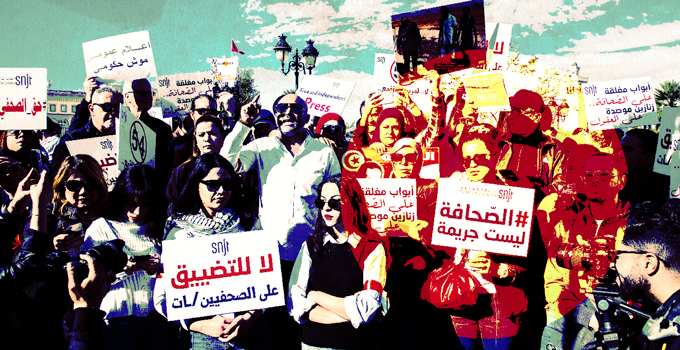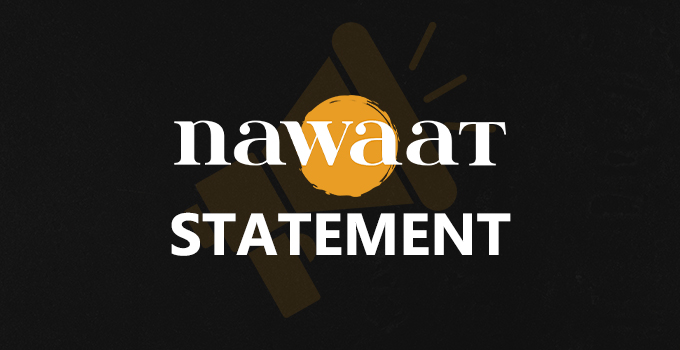
“If it was happening in Iran instead of Tunisia, it would be on the front pages of all the newspapers.” Complaints of this kind about coverage of the Tunisian uprising keep appearing on the internet – many of them suggesting that editors around the world are protecting Ben Ali’s regime from criticism for political reasons.
Politics may come into here and there, but it’s not by any means the main factor, as Octavia Nasr (formerly of CNN) explains on her blog.
When the trouble broke out in Iran last year, there was already a lot of media interest. The opposition had been active for months and, when the election came, its outcome was uncertain (unlike elections in Tunisia). Journalists who had gone to Iran for the election were already on hand to report the protests that came in its aftermath.
Tunisia, by contrast, is off the international news map and none of the media are geared up to cover it to any great extent.
Also, while it’s easy to see now that the trouble in Sidi Bouzid on December 18 marked the start of something much bigger, that was far from obvious at the time.
I didn’t hear about it myself until four days later when a report from Associated Press appeared on the Washington Post’s website. When I first wrote about it on my blog, on December 24, it still looked like a very localised spot of bother: interesting, but hardly the kind of thing that would get news organisations scurrying to despatch reporters to the country.
Incidents of this kind occur quite often, even in unexpected places, and usually they go quiet after a day or two. A similar thing had happened (for different reasons) in the Saudi city of Madina the previous week before fizzling out.
It didn’t really become clear until last weekend that the protests in Tunisia, far from fizzling out, were growing and spreading.
Looking at it now, I think the Tunisian uprising is a very important event, potentially for the whole Middle East, not just Tunisia – though I woudn’t have said that a week ago. At the same time, I can see why news organisations aren’t pouring vast resources into covering it: there are too many obstacles on the ground and they are still uncertain about how long it will last.
To what extent, though, does international media coverage – or the lack of it – matter? Obviously it’s good if people around the world know what is happening but how does it benefit the struggle going on inisde the country? The object of that struggle is not to get pictures in the New York Times; it’s to get rid of Ben Ali.
Some good-quality reporting would be nice, but I doubt that it’s going to affect the outcome. Remember: despite all the media coverage of the Iranian protests, Ahmadinejad is still in power.
What we should be much more concerned about at this stage is the flows of information within Tunisia. Considering all the restrictions imposed by the regime, how well are the protesters able to communicate with each other and co-ordinate their efforts?
In his televised speech on Tuesday, President Ben Ali condemend the rioters and seemed to be urging Tunisians to make their point peacefully.
“We reassert the need to respect freedom of opinion and of speech,” he said. “We respect any position if it is expressed within the framework of law, the rules and dialogue.”
So, how does this work in practice?
Here’s a little story from last May, when a group of Tunisian activists wanted to take part in the worldwide day against internet censorship.
They went to a police station, filled in the forms requesting permission to demonstrate – and were immediately detained by the police. One of them was then forced to record a video urging people not to turn up for the demonstration and to sign a document acknowledging that his call for a demonstration was “wrong”.
Brian Whitaker, 31 Dec 2010




[…] Tunisia and the media » Nawaat de Tunisie – Tunisia. […]
one Tunisian wrote:
Homage to the Pencil,
The Pen and the sheet
To give birth, to illustrate their thoughts
And their masterpiece;
The poet, the historian, the writer, the journalist, the painter…,
Often,
Have recourse to the pen and the pencil.
With the pen
And its artistic point,
The novelists
Describe with patience
Their animosity, their resentments, their grievance,
Their handicap and their aspirations
The pencil
Is the tool of the aesthetic expression?
It exhibits a special form
With a certain norm
And a unique characteristic
It deciphers the historic art in a written manner and specific.
The pencil and the pen
Are also the vehicles?
Of the writer, the artist, the vulnerable,
The optimist and the unpleasant one
Pablo Neruda, J.Paul Sartre,
Voltaire, Picasso and Van Gogh are among the examples…
For them the pencil and the pen were the engine of revelation,
Of the art, of the literary criticism,
Of poetry, of philosophy, of the arbitrary
And of the political avant-garde expeditionary
The pencil and the pen
Are the messengers of the scripture?
Orthography and grammar;
Conscience and Emancipation,
Pensive communication and narration
And the language of iron.
“freedom is not free…”
[…] This post was mentioned on Twitter by Nawaat de Tunisie. Nawaat de Tunisie said: Nawaat: Tunisia and the media: “If it was happening in Iran instead of Tunisia, it would be on the front pages o… http://bit.ly/eKLCzh […]
don’t count on the ( wild ) west they are the real rulers of Tunisia and their mission is none other than enslaving them by allowing them to drive cars, buy propperty and by doing so placing a noose around their nek that is getting tighter each day.